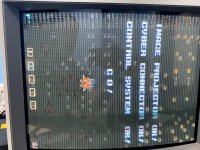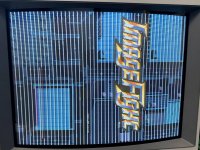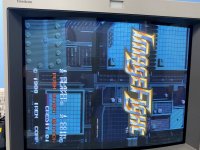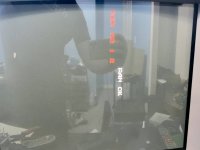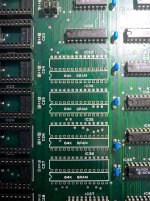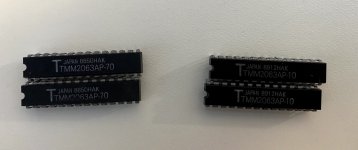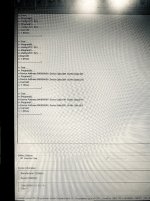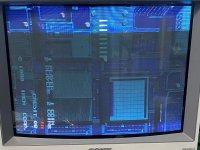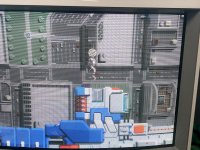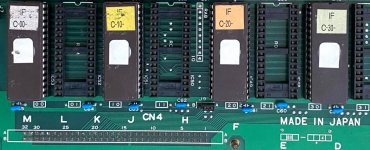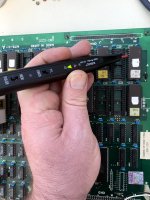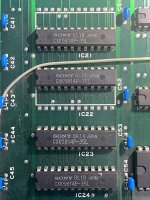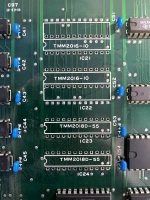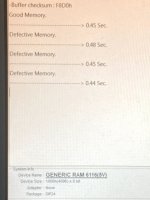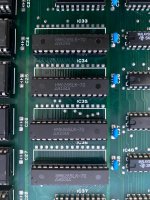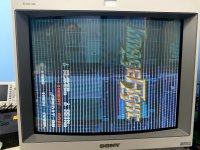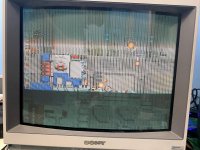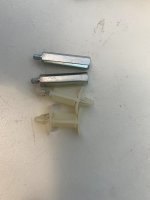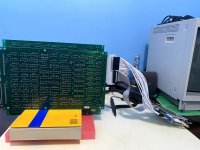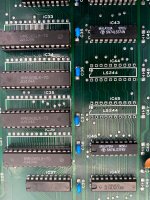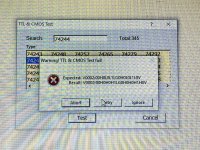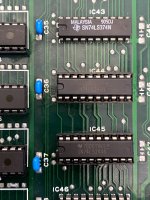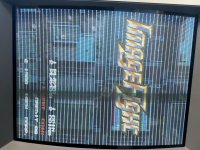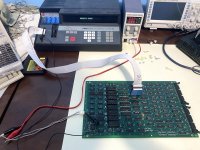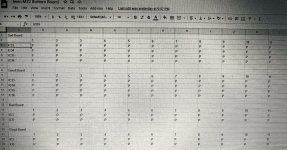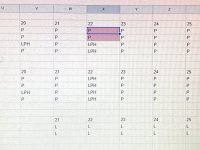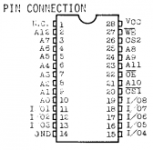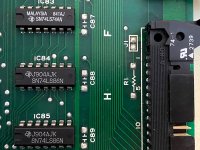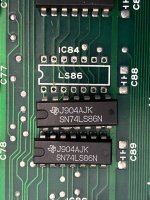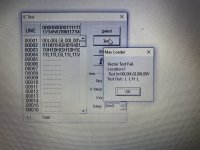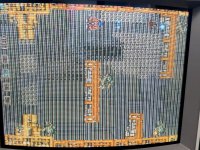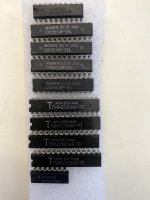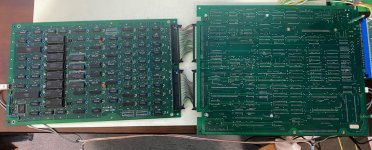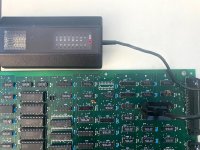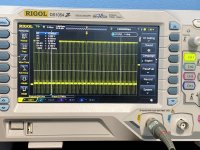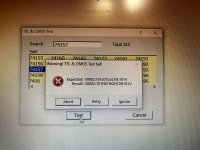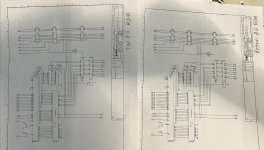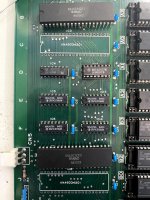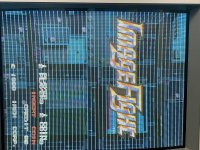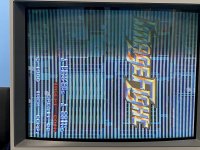ShootTheCore
Legendary
Received for repair this Irem M72 board stack labeled as Legend of Hero Tonma. It would boot to a corrupted screen.
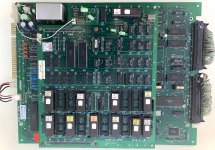
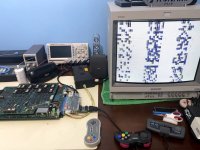
Checking around the EPROMs, I noticed two things immediately:
1) The ROMs and MCU are labeled for Image Fight, not Tonma.
2) Some of the ROMs were installed in the wrong sockets.
Shifting the ROMs around to the correct sockets allowed the board to boot further than before, but it still froze on a corrupted screen.
I dumped all the ROMs and compared them against MAME. All checksums matched the Japanese Image Fight set, except for two chips (L0 and H0) where the checksums didn't match anything.
Programming and installing new EPROMs for L0 and H0 now allows the game to boot up and display with an almost completely corrupted sprite layer and jailbars displaying over the top of everything (likely the malfunctioning sprites). Music and sound effects are playing fine.
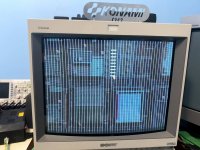
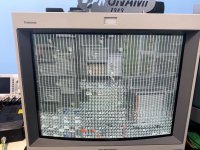
That's all I have time for tonight - more to come! Next time I'll be focusing on the part of the board stack that renders sprites.


Checking around the EPROMs, I noticed two things immediately:
1) The ROMs and MCU are labeled for Image Fight, not Tonma.
2) Some of the ROMs were installed in the wrong sockets.
Shifting the ROMs around to the correct sockets allowed the board to boot further than before, but it still froze on a corrupted screen.
I dumped all the ROMs and compared them against MAME. All checksums matched the Japanese Image Fight set, except for two chips (L0 and H0) where the checksums didn't match anything.
Programming and installing new EPROMs for L0 and H0 now allows the game to boot up and display with an almost completely corrupted sprite layer and jailbars displaying over the top of everything (likely the malfunctioning sprites). Music and sound effects are playing fine.


That's all I have time for tonight - more to come! Next time I'll be focusing on the part of the board stack that renders sprites.

